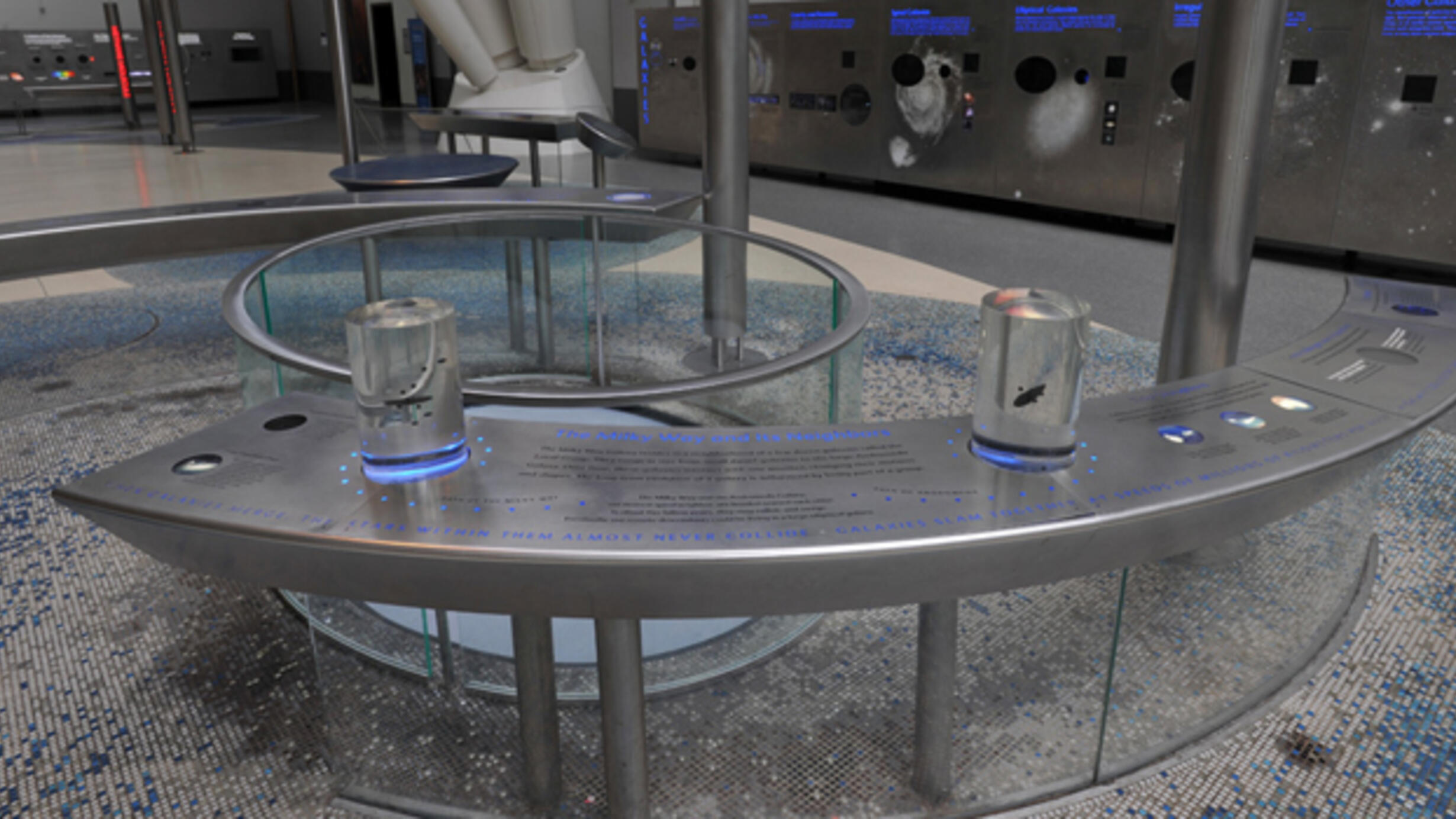The Milky Way and Its Neighbors
Part of Hall of the Universe.
 AMNH/D. Finnin
AMNH/D. Finnin The Milky Way Galaxy resides in a neighborhood of a few dozen galaxies called the Local Group. They range in size from small dwarf galaxies to the large Andromeda Galaxy. Over time, these galaxies interact with one another, changing their motions and shapes. The long-term evolution of a galaxy is influenced by being part of a group. The Milky Way and the Andromeda Galaxy, our nearest spiral neighbor, are headed toward each other. In about five billion years, they may collide and merge. Eventually, our remote descendants could be living in a large elliptical galaxy.
Formerly a satellite galaxy, the Sagittarius Dwarf has plunged into the Milky Way and is now being consumed. Who knows how many other satellite galaxies the Milky Way has already eaten.
At first glance, the merging of galaxies appears to be destructive. But such encounters play an important role in galaxy building. Large galaxies often consume their smaller galactic neighbors. These minor mergers are common, and have little effect on the structure of the larger galaxy. In contrast, severe distortion results from the merger of two galaxies of comparable size. After about a billion years, the two combine to form a new galaxy. Large elliptical galaxies probably formed in this way.